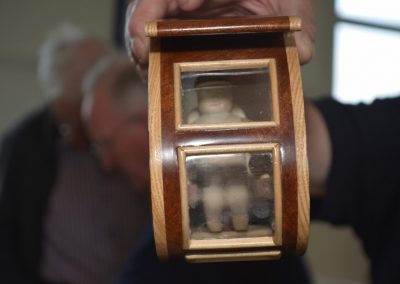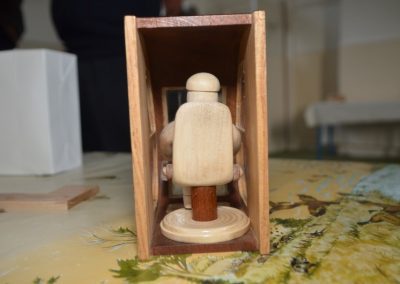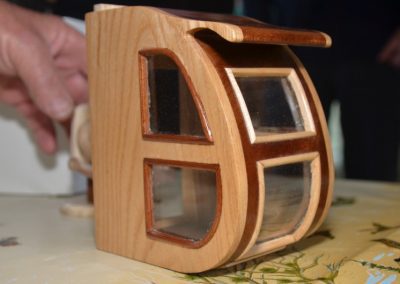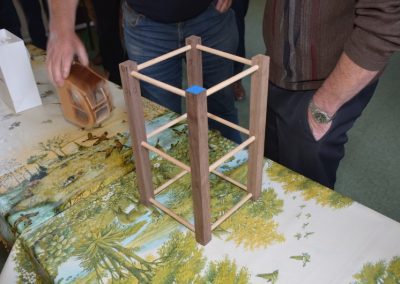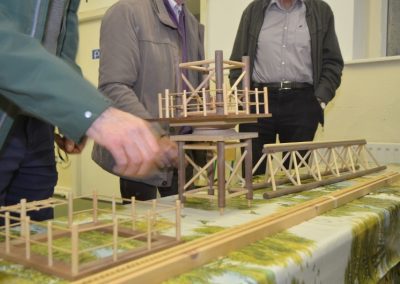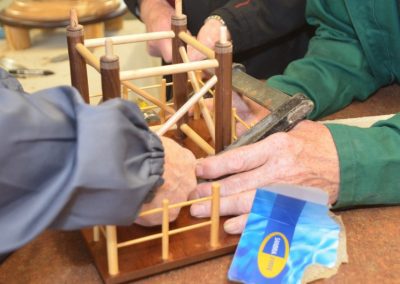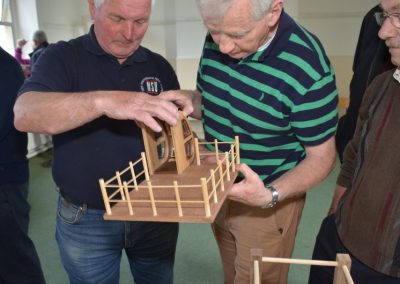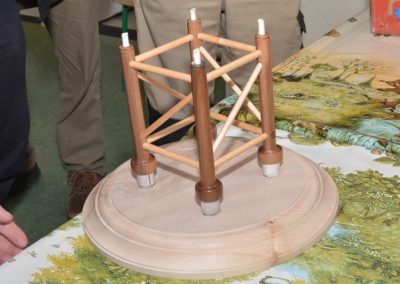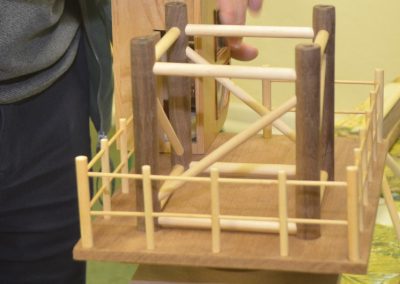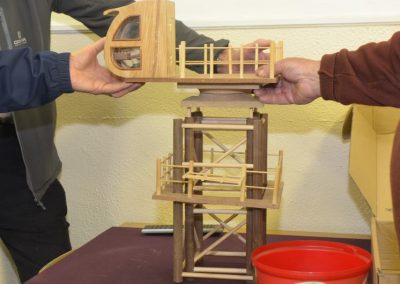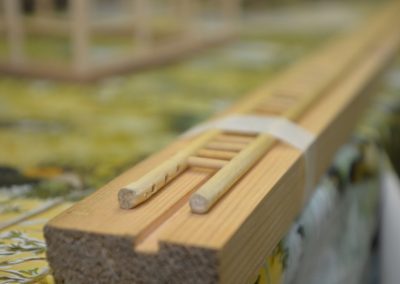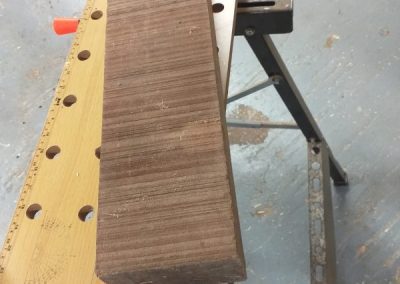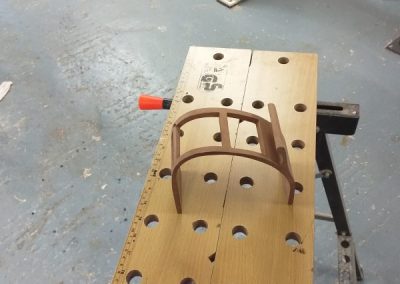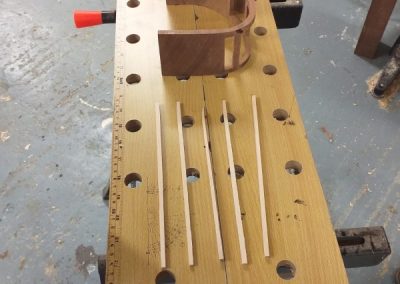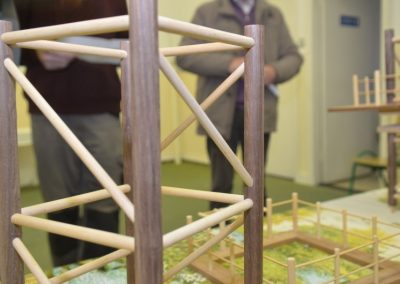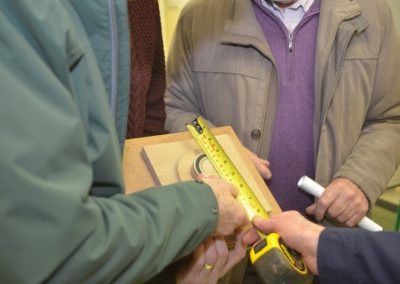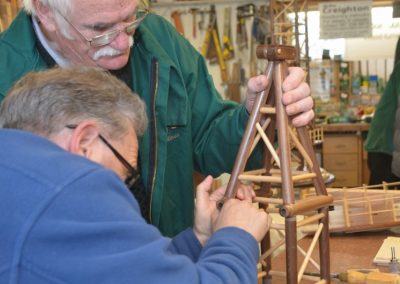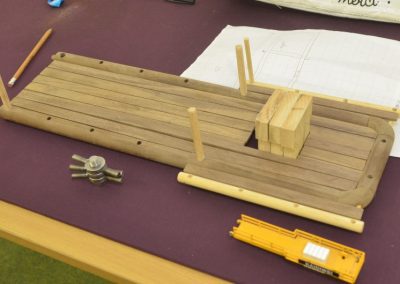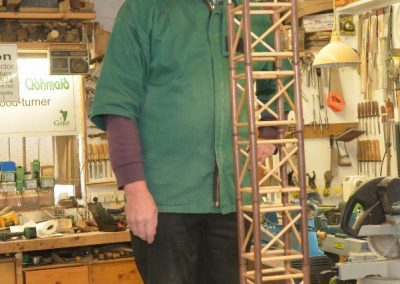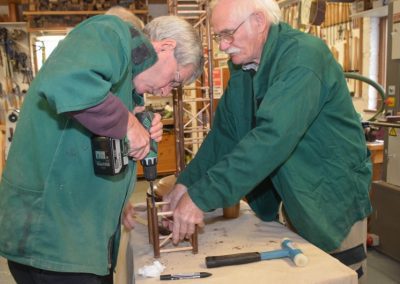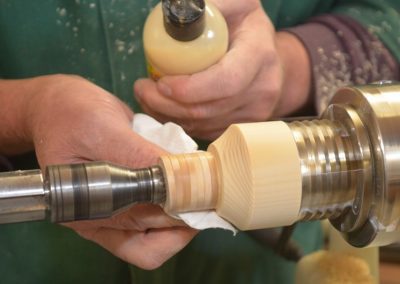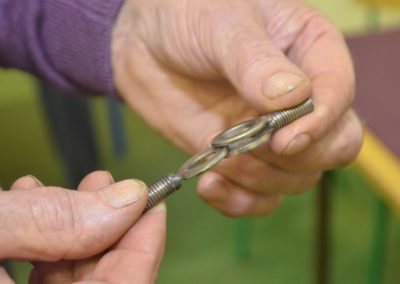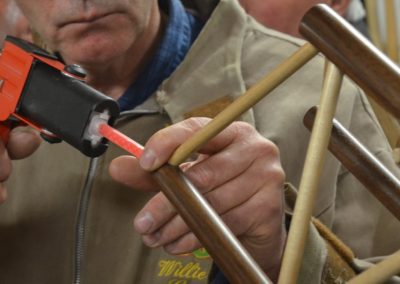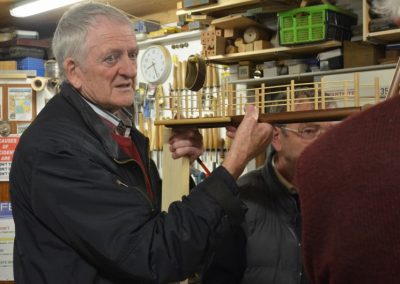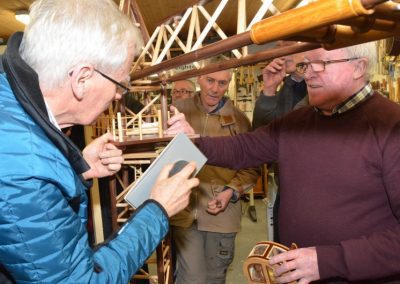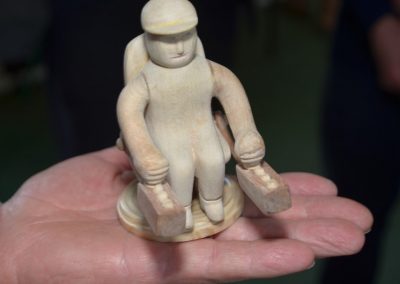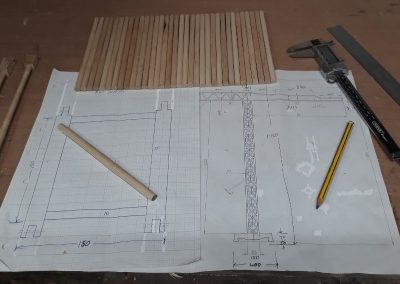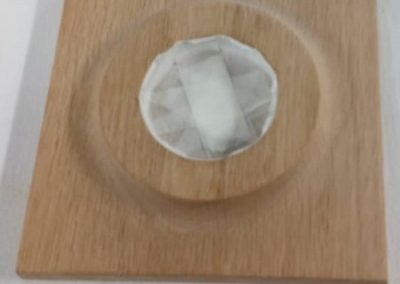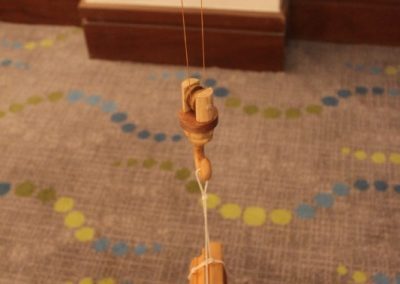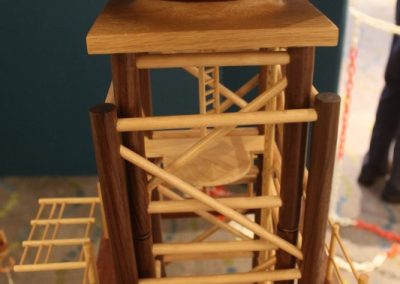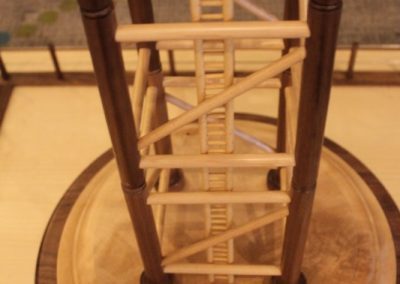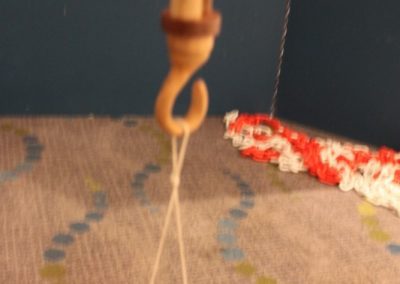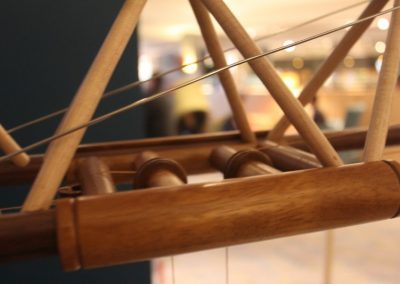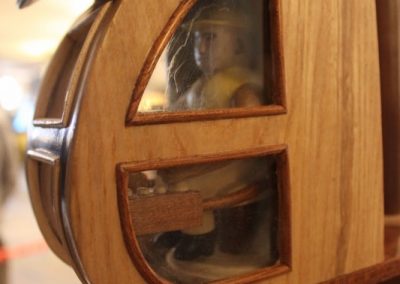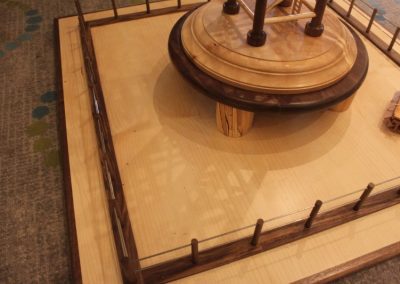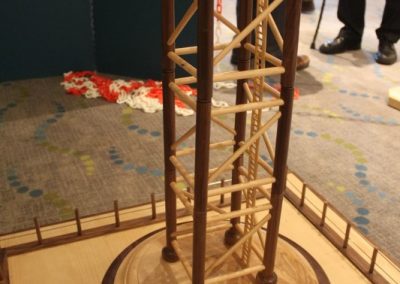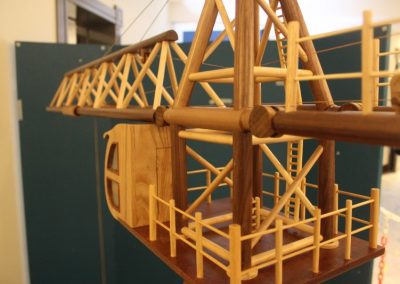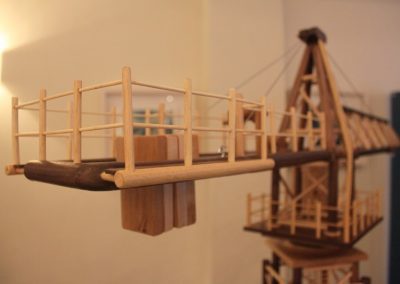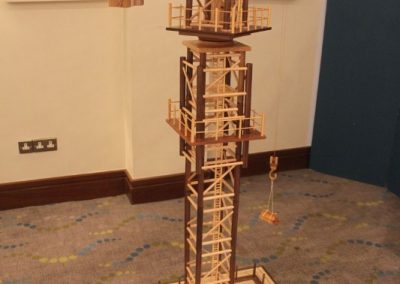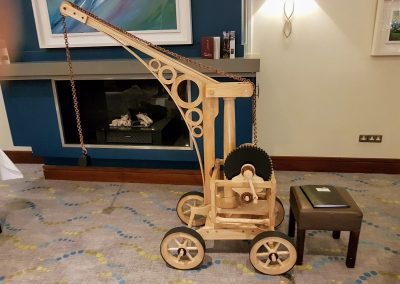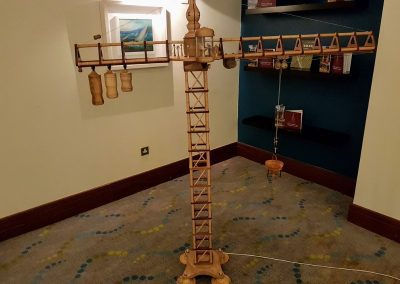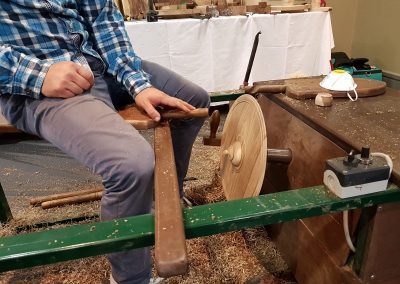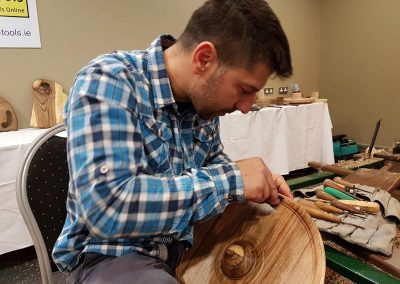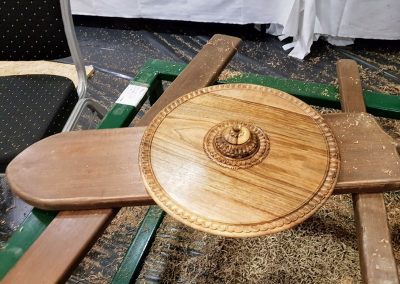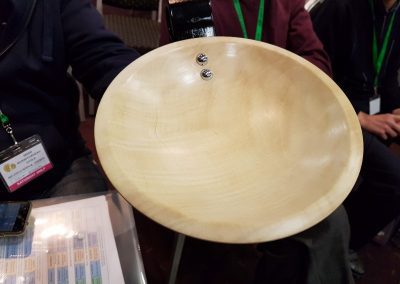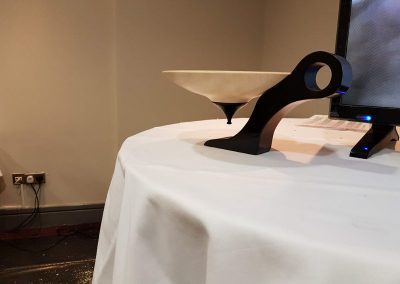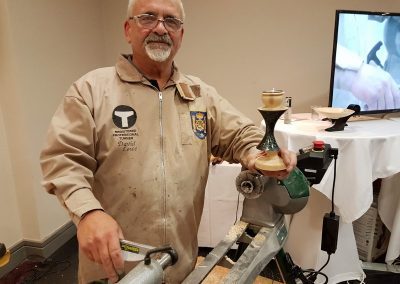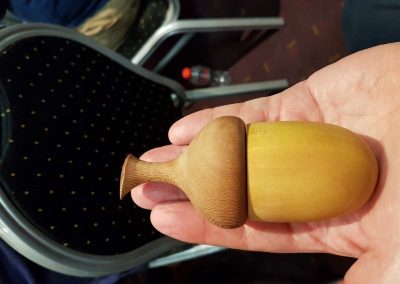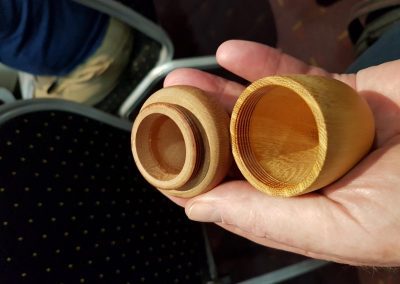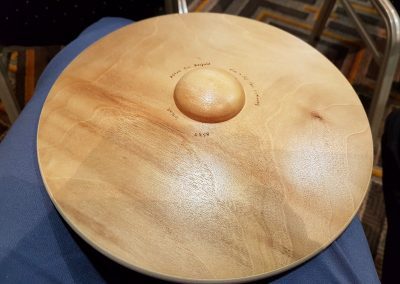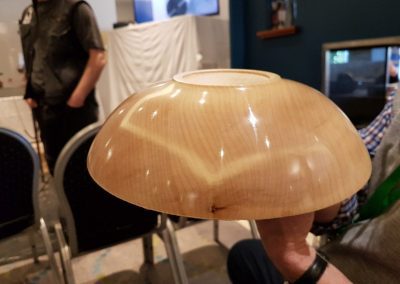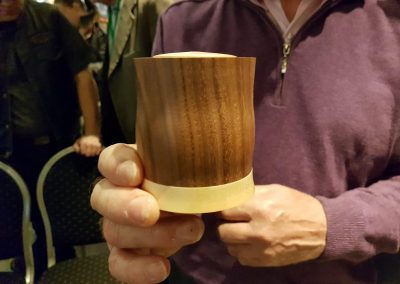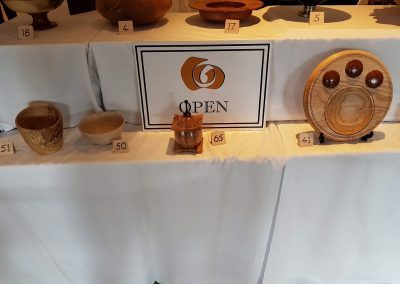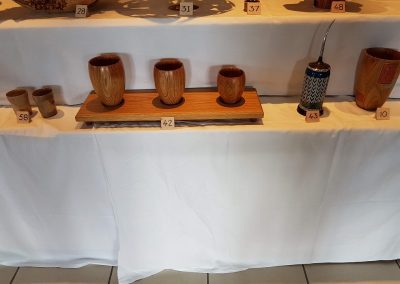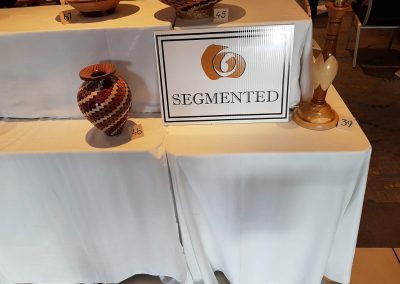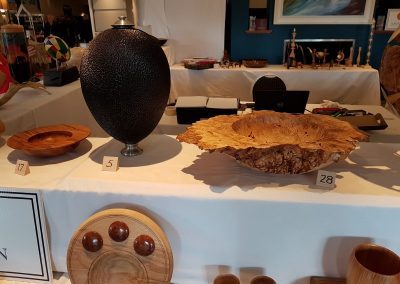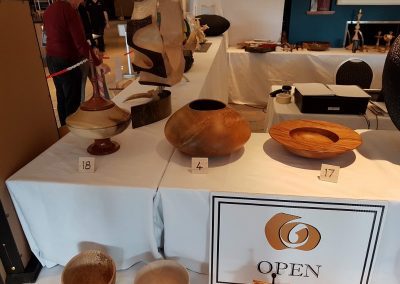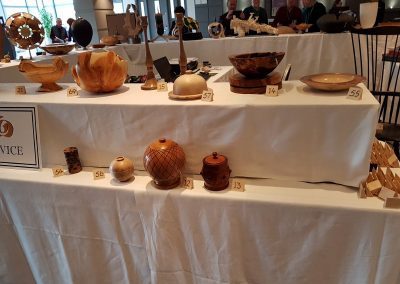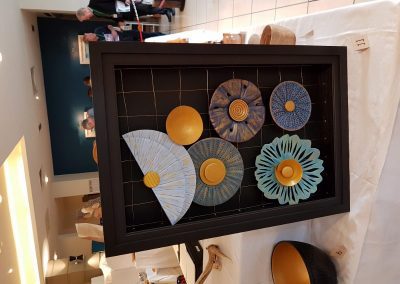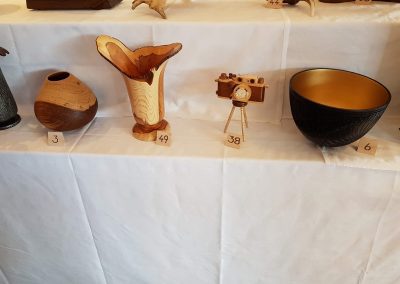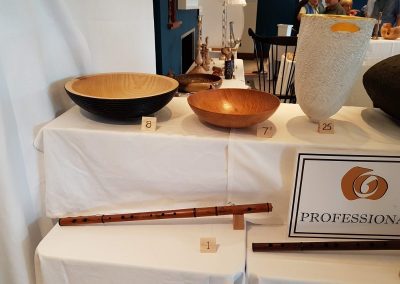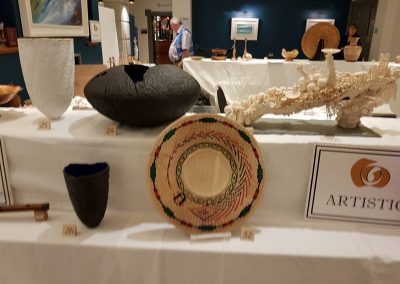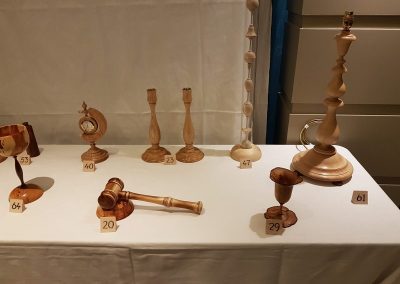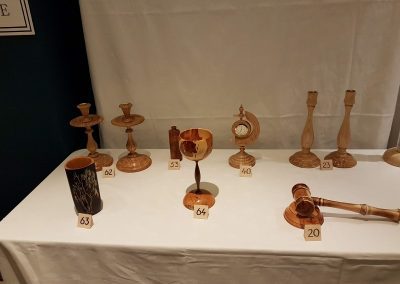
CraobhEo Crane Entry
CraobhEo chapter members always look forward to the IWG Chapter Challenge and 2019 was no exception. It is never just the nominated challenge that engages but all those things that goes with it like introducing skills that we hadn’t used before, meeting together and of course seeing the end result being put to good use as a vehicle mainly for raising funds for our nominated local charity each year.
Introduction
This year we assembled a team of fifteen CraobhEo members. We got some drawings and sketches with dimensions of the various parts and divided the project into several sections that could be taken away by the teams. This was a project with lots of individual parts which were then assembled into the various sections that went to make up the final assembly.
Regular meetings were held to monitor progress, get feedback on work being done and make sure we were all singing from the same hymn sheet. Camera crews started appearing later in the project to record what was been done in anticipation of future plans for the Crane.
The Crane Project
The crane chosen as our model is a tower crane, the type of crane used on most building sites in Ireland. Its main sections are the base, tower itself, climbing frame, turntable, platform with crow’s nest and the jib which houses the trolley pulley and winch to operate the trolley and crane hook.
We divided the project into several mini projects and allocated these to teams and individuals.
Base
CraobhEo member – Willie Creighton
At the very bottom, resting on the floor, is a laminated maple platform with a walnut trim to provide stability to the structure. Sitting on the platform is a turned sycamore and walnut base on spalted beech legs. Consideration here was given to providing a stable platform to anchor the crane.
Tower
CraobhEo members – Tom Burke, Noel Grogan, P.J. Hallinen, Michael Maye and Martin Wilson
The tower has undoubtably the greatest number of parts. It was made in seven sections, 150 mm square. Tom, Noel and Michael were tasked with turning the individual maple 10 mm and 8 mm dowels for each section. P.J. and Martin then turned the 20 mm walnut pillars and assembled each section using a jig for consistency. The diagonals were set at a 40-degree angle and each section consisted of eight 10 mm dowels, four 8 mm diagonal dowels and the four 20 mm pillars. The mast was the most complicated section of the tower and presented P.J. and Martin with the biggest challenge of somehow getting from the 150 mm square tower at the bottom to a point at the top of the mast.
The Climbing Frame
CraobhEo member – Liam Horan
This section of the tower sits outside the tower itself and travels up and down independently. It is similar in design to the tower sections but a one off. Liam turned the 20 mm walnut pillars first followed by the 10 mm and 8 mm maple rails. The pillars were drilled at an angle for the diagonals and 90 degrees for the rails. Ensuring that the frame was square and true was the biggest challenge during the assembly.
The Climbing Frame Walkway
CraobhEo member – Pat O’Malley
The walkway fits outside the climbing frame and was prepared and assembled by Pat. The deck consisted of four mahogany lengths mitred and glued at the corners to form the square. A mixture of 9 mm and 6 mm dowels were used for the posts and 3 mm dowels for the rails. The main challenge was drilling the corner and centre posts accurately and in line to receive the 3 mm rails.
The Turn Table
CraobhEo member – Pat O’Malley
The square turntable is small but is one of the most important parts of the crane. The main consideration was that It must rotate and bear the weight of the jib as it turns so a bearing was inserted into the turntable to facilitate smooth operation. The square oak base of the turntable sits on top of the sixth tower section. Four 20 mm holes were drilled in the underside of the base to attach the pillars.
The topside of the base was hollowed out to receive the bearing which sits flush with the surface. The other half (top) of the turntable was dimensioned to match the square base and hollowed out to receive a tenon. This tenon was then turned to fit snugly into the middle of the bearing at one end and fit into the top of the turntable at the other with about 2 mm clearance between the two. Finally, where the two halves of the turntable meet and rotate around the 2 mm gap, this area was turned down to a concave shape.
The Platform
CraobhEo member – Pat O’Malley
The mahogany platform which sits on top of the turntable also houses the Crow’s nest. The seventh section of the tower is anchored into it by drilling four 20 mm holes to attach the pillars. Like the climbing frame walkway, a fence surrounds the platform and the challenge here was to bore the 9 mm and 6 mm fence posts accurately and in line to receive the 3 mm railing. Finally, a 22 mm hole was drilled through the platform and through the turntable below to allow the ladder to be installed for access.
The Crow’s Nest & Ladder
CraobhEo members – Tom Jordan, John Mullen & Kevin Leonard
This team took on the difficult job of making the birds nest. The main body was fashioned first out of one mahogany piece. Then the sides with window frames in ash and Perspex panes were fitted to the body. The driver and seat were carved from sycamore and placed on a mahogany stand. Finally, the back panel and door were made from ash and fitted.
The ladder runs from the base of the crane through the turntable right to the apex of the mast. Drilling the 6 mm dowels for the long rails accurately to receive the 3 mm rungs was the challenge.
The Forward Jib
CraobhEo members – Richard Barret & Padraig Grealis
A lot of activity occurs along the forward jib. First up the long and short rails or bars were turned by the team. Due to the triangular shape of the front jib, fitting the diagonals presented quite a challenge. Four diagonal rails attached to the bottom horizontal rails came to a point on the top horizontal rail, so a jig was made for drilling the top rail.
The pully wheels for the hook and trolley as well as the jockey wheels fixed to the top rail were turned. The trolley with its slider was turned and assembled as well as the winch and trolley pully.
The trolley pully anchored in the Aft Jib controls the trolley with the rope, allowing it to be moved forward and backwards along the bottom rails. The winch also anchored in the Aft Jib with rope attached, controls the lowering and raising of the hook.
The Forward Jib is supported by two tie wires attached to the body and an anchor point on the mast.
The Aft Jib
CraobhEo member – Sean Byrne
This is the other half of the jib which is also hinged to the tower. Much shorter but designed to balance out the forward jib. It consists of two walnut parallel rails running through the spine. A walkway deck of walnut panels runs between the rails but then towards the backend extends out to circle the ballast area. The rear corners were made by turning a 20 mm donut, which were quartered two of which were used to connect the corners at the rear of the platform. The fence consists of 9 mm and 6 mm posts with 3 mm railing. Drilling the posts accurately and in line for the railing was a challenge.
The Aft Jib is also supported by two tie wires attached to the body and an anchor point on the mast.
Finishing
CraobhEo member – Ian McDougall
So, to the most important job of all. Ian took the sanded bare wood sections and turned them into the finished article. Strict instructions were given to each member to avoid glue lines seeping onto bare wood. It was important to mask up as the project progressed. Ian applied several coats of sanding sealer and lacquer until he was happy with the end result.
Assembly
CraobhEo members – Full team over two sessions
The assembly is always the exciting part when it all comes together. Assembly was done in Willie’s workshop. The first session built the tower from the base to the mast. The base came first followed by the tower sections and the climbing frame and walkway. Next the turntable and platform were assembled and attached to the tower below. Then the top tower sections were attached. The ladder was attached as we went along starting at the bottom of the tower, going through the turntable and then up to the mast.
The second session was all about attaching the front and back jibs. Hinges were inserted into both jibs and attached to the tower to facilitate transportation. The forward and aft jibs were glued in place and the supporting tie wires attached to the anchor on the mast for stability. Willie was employed to do some last minute turning of washers and anchor point dowels as the sessions were in progress.
Finally, the trolley pully rope was threaded through the pulleys and attached to the trolley and the winch rope to the crane hook.
Photography and Video
CraobhEo member – Michael Maye with Michael Brown and Valerie Grogan
Nowadays the social media element of a project is very important. People want to know all about what went on and how we got there. Here Michael Maye used his considerable photography skills to capture various moments as we went along. While this publication only shows a limited no of photos, lots more can be seen on the CraobhEo website.
The video recording of the project was undertaken by Michael Brown and Valerie Grogan. This will be of great benefit to us as we enter the next stage of the project.
One Member’s Experience
CraobhEo member – Michael Maye
Hi Pat,
Just a few words on my part for the project.
After a lot of encouragement from fellow chapter members, I finally built up the courage to take part in this year’s chapter challenge. The crane project was divided up into different sections and chapter members taking part in the challenge were divided up into teams. Each team were then given a section to complete.
There were 3 on our team and we took on the main tower section of the crane. The main tower consisted of 8 sections which would fit into each other. Each section consisted of 4 columns turned from walnut, 4 diagonal rails and 8 straight rails at 90* to the 4 columns which were turned from maple.
At our 1st chapter challenge meeting, the first of many throughout the project, the chapter challenge team leader gave each team detailed drawings of each part of the crane that they had to turn. I took the diagonal spindles, these were 8mm in diameter and 170mm long. There were 32 needed for the 8 sections. There were also some needed for the very top mast section. The timber needed for the crane was sorted and given out to each team.
I got 5 lengths of 12mm square maple, which I’d hoped would be enough as I was expecting a few mistakes to be made! I was actually surprised when I started turning the spindles that I made very few mistakes. Once I got set up, I cut the square stock to 220mm for mounting in my chuck with pen jaws.
The first few spindles I was quite slow in turning. I had to make sure they were exactly 8mm to fit in the holes drilled by my other team member. What I found was the more spindles that I turned, the quicker I was getting. I also found it was great practice for using my skew chisel, which I always found difficult to use. I was worried at the next meeting where we were fitting all the parts together, that none of mine would be good enough. Thankfully out of the 45 that I turned, only 1 wouldn’t fit right, which I was quite relieved with!
.Kind regards,
Michael Maye.
Participants
Richard Barrett, Tom Burke, Sean Byrne, Willie Creighton, Padraig Grealis, Noel Grogan, P.J. Hallinen, Liam Horan, Tom Jordan, Kevin Leonard, Michael Maye, Ian McDougall, John Mullen, Pat O’Malley, Martin Wilson
List of Materials
1 Base of 18 mm HDF 950 mm x 950 mm
1 Piece of Sycamore 400 mm x 400 mm
1 Piece of Walnut 480 mm x 480
1 Piece Spalted Beech 500 mm x 75 mm x 75 mm
25 Metres of Walnut 25 mm x 25 mm
16 Metres of Maple 14.5 mm x 14.5 mm
16 Meters of Maple 12 mm x 12 mm
1 Piece of Mahogany 320 mm x 340 mm x 10 mm
1 Piece of Oak 360 mm x 180 mm x 35 mm
4 Metres of Walnut 20 mm x 18 mm
1 Piece of Maple 400 mm x 70 mm x 20 mm
2 Metres of 3 mm Dowel
3 Metres of 6 mm Dowel
1 Piece of Iroko 500 mm x 32 mm
1 Metre of Mahogany 40 mm x 12 mm
3 Meters of Walnut 20 mm by 4 mm
Sponsors
We are grateful for the support of our sponsors listed here
Paul Donnellan Joinery, Ballyhaunis, C0. Mayo
Eamonn Burke Stairs, Skreen, Co. Sligo
Alan Butler, Cabinetmaker, Foxford Co. Mayo
Collins Plastics, Adnaree, Ballina, Co. Mayo
Gerry Loftus, Celtic Scaffolding, Carrowbetty, Co. Roscommon
Edmund Lavin Services Ltd, Castlebar, Co. Mayo
